Giant Rubber Ducky
ネズミ顔な野郎
Carnage Toilet
惨 殺 便 所
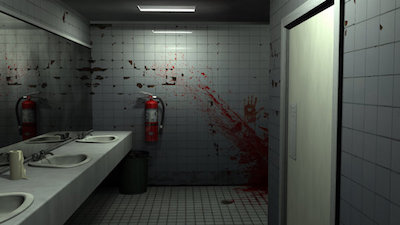
"Just who is in the toilet?"
「便所の中には何者だ?」
OOC | IC | Character Sheet | Rules | Misc Information
~+~+~+~+~+~+~
Narukami High School
私 立 鳴 神 高 等 学 園
惨 殺 便 所

"Just who is in the toilet?"
「便所の中には何者だ?」
OOC | IC | Character Sheet | Rules | Misc Information
~+~+~+~+~+~+~
Narukami High School
私 立 鳴 神 高 等 学 園
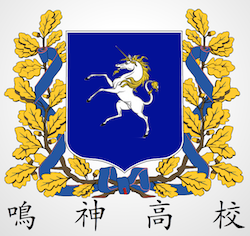
History
歴史
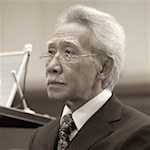
緑間 征次 教授
Prof. Seiji Midorima
1890 - 1978
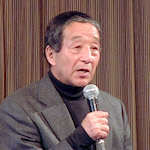
本城 貴将
Kishō Honjō
1926 -
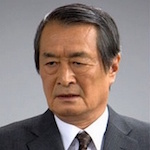
火楽井 優馬 博士
Dr. Yūma Kagakui
1953 -
As Narukami City was spared from the intense firestorms rained upon Japan by the United States during the Second World War, Narukami High School's building, constructed partly with Professor Midorima's personal wealth and partly by donor money, managed to survive the dark period in Japanese history. Following the end of the war and the temporary occupation of Narukami by American forces, Midorima was allowed to keep his school open; his pacifism and opposition to Japan's participation in the war were widely known to both the Americans and to the local rulers.
After Prof Midorima retired in 1967, leadership of the school passed on to Mr Kishō Honjō, a vice-principal for 12 years, whom Midorima had hand-picked to succeed him. Under Mr Honjō's leadership, Narukami's enrolment rates slowly grew over the years, as the school's reputation as a premier institute for high school education became known to the city's inhabitants. Aside from maintaining high academic standards, he also introduced an extracurricular programme to ensure the holistic development of all students, requiring all students to take up a sport or a performing art in addition to their academics.
It was also during the 32-year principalship of Mr Honjō that Narukami High opened a partnership programme with two other schools in 1982: Fu-Chih High School of Taiwan and Yonebayashi High School of Okinawa. Under this partnership programme, each of the three schools takes turns to send one batch of students to each school every year, beginning with Narukami High in 1982.
Honjō stepped down from his post in 1999, and a third principal was appointed: Dr Yūma Kagakui, a PhD holder in Global Environmental Studies from Kyoto University, himself a former student of Narukami High School.
Dr Kagakui has, to date, held the post of Principal for almost two decades, and has overseen a great many changes and improvements, including the construction of a second cafeteria to cater to the school population's growing numbers, as well as the installation of AC units and projectors in all classrooms.
Unfortunately for Dr Kagakui, he is also the principal responsible for keeping the latest toilet incident under control.
School Building
学校建物
Narukami High School consists of three blocks, each being four storeys high.学校建物
Block A, the South Block, contains classrooms. Three of the four levels contain ten rooms, nine of which are classrooms lettered A to I; the last room is an extra room, kept empty for when an empty room is needed for one reason or another. The topmost floor contains six empty classrooms used for subject specific remedial lessons as and when teachers require it.
Block B, the East Block, contains science labs (of which there are six), home economics rooms (two), and studios for dance, martial arts, or any other extracurricular activities (ten). The remaining rooms are used for the faculty offices and, where adjacent, have had their walls removed. Block B, being the middle block, is also the entrance of the school, and houses the locker room on the bottommost floor.
Block C, the North Block, contains the school hall, used to conduct morning assembly on rainy or snowy days. This hall takes up three of the four levels; aside from the ground level, the two upper levels act as observation levels. The topmost level is used as a storeroom for miscellaneous equipment.
Each block contains one set of male and female bathrooms for students to shower after PE and for general ablutions; faculty bathrooms are located within the staff rooms. As of the incidents, all bathrooms are unusable due to whatever is lurking inside them; fifteen portable toilets have been set up in the school field.
There are also two separate cafeteria blocks; one houses a standard cafeteria, while the other has a small café that sells mainly desserts and drinks. The latter was built only in 2011.
Extracurricular Activities
課外活動
課外活動
Upon entering Narukami High School, all students are required to choose an extracurricular activity; this policy was implemented by Principal Kishō Honjō in 1994, to ensure that all students were holistically developed by the time they left the school.
All extracurricular clubs and groups are led by Year 3 students: available positions include the Chairman, Vice-chairman, and the Secretary, all of which may have different names depending on the group (for example, the volleyball team has a Captain, a Vice-captain, and a Quartermaster). The exception is the Student Council, which has a much more extensive leadership structure.
The list of extracurricular activities is as follows:
Performing Arts
• Orchestra (オーケストラ, ōkesutora)
• Choir (聖歌隊, seikatai)
• Kabuki (歌舞伎 kabuki)
• Drama (演劇, engeki)
• Military Band (軍楽隊, gungakutai)
• Dance (ダンス, dansu)
Sports
• Baseball (野球, yakyū)
• Volleyball (排球, haikyū)
• Basketball (籠球, rōkyū)
• Football (蹴球, shūkyū)
• Gymnastics (体操, taisō)
• Table Tennis (テーブルテニス, tēburu tenisu)
• Karate (空手, karate)
• Judo (柔道, jūdō)
Others
• Student Council (生徒会, seitokai) *
• Western Chess (西洋将棋, seiyō shōgi)
• Literature Society (文学会, bungakukai)
• Debate (討議, tōgi)
• Art (美術, bijutsu)
• Entrepreneur Club (企業クラブ, kigyō kurabu)
* Students who join the Student Council are allowed to join a second extracurricular group; however, they may not take up leadership roles in that other group.
~+~+~+~+~+~+~
Narukami City
鳴 神 市
Narukami City
鳴 神 市
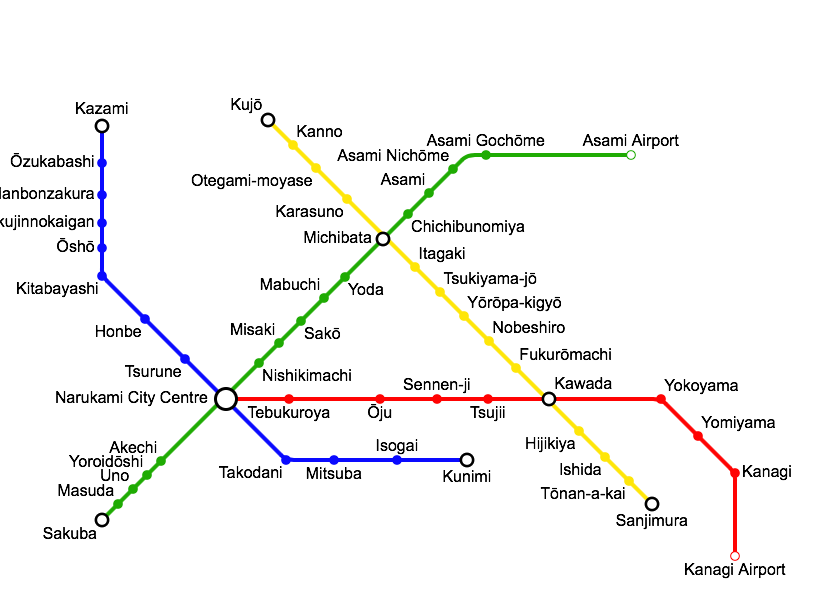
Apologies for the long names on the leftmost portion of the map getting cut off. The two words on the left read, from top to bottom, "Manbonzakura" and "Hakujinnokaigan".
Narukami is a coastal city located in Niigata Prefecture, Japan. It lies on the Northwest coast of Honshū, 19km northeast of Niigata City.
---
Population: 526,000 (3 significant figures)
Mayor: Yoichi Tōjō (東城 與一)
Area: 857 sq. km
Density: 613/sq. km
Time Zone: Japan Standard Time (UTC +9)
Official Tree: Cleyera Japonica (Sakaki)
Official Flower: Peach flower (Momo)
Official Bird: Kingfisher (Kawasemi)
Last edited:

